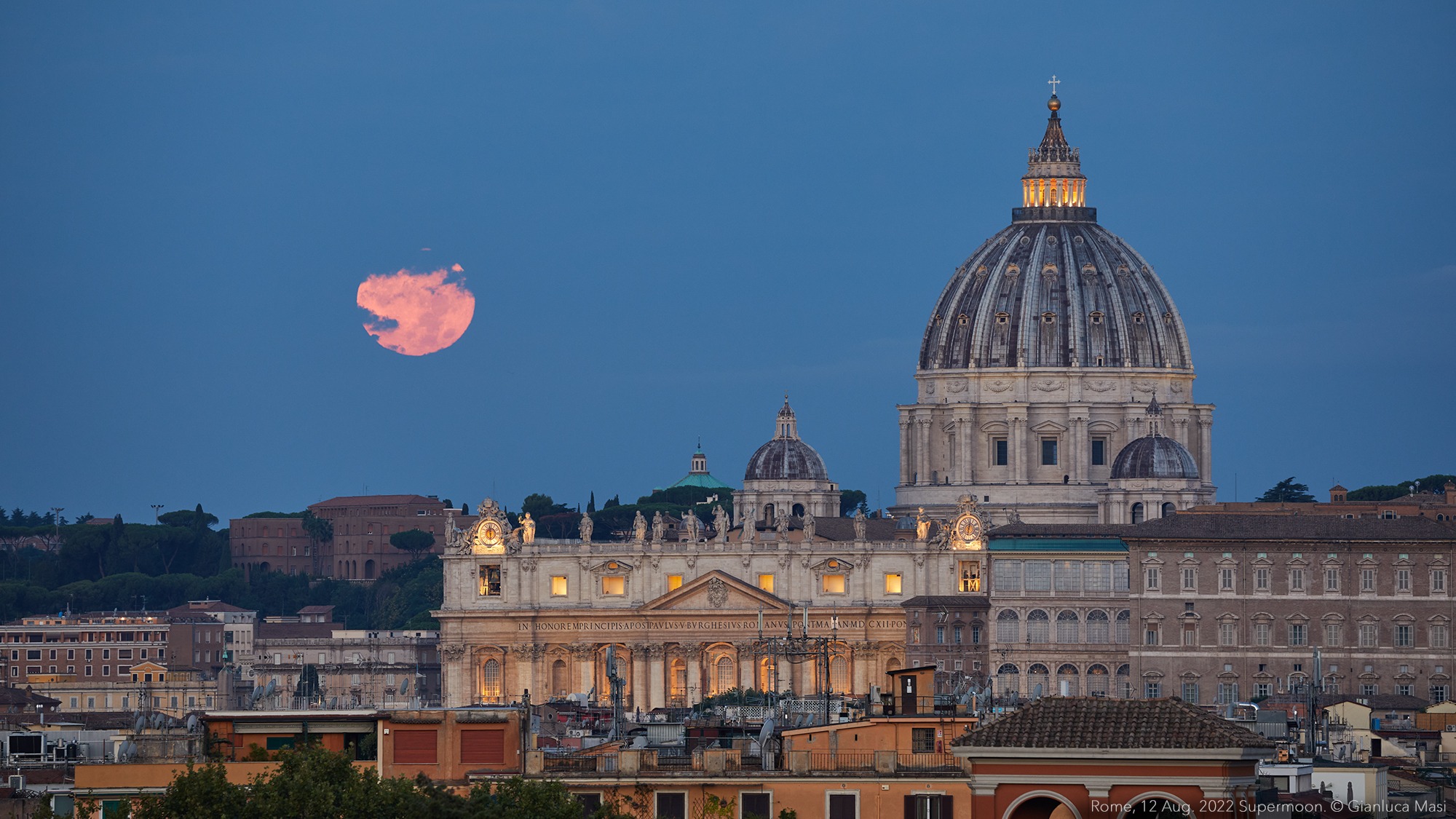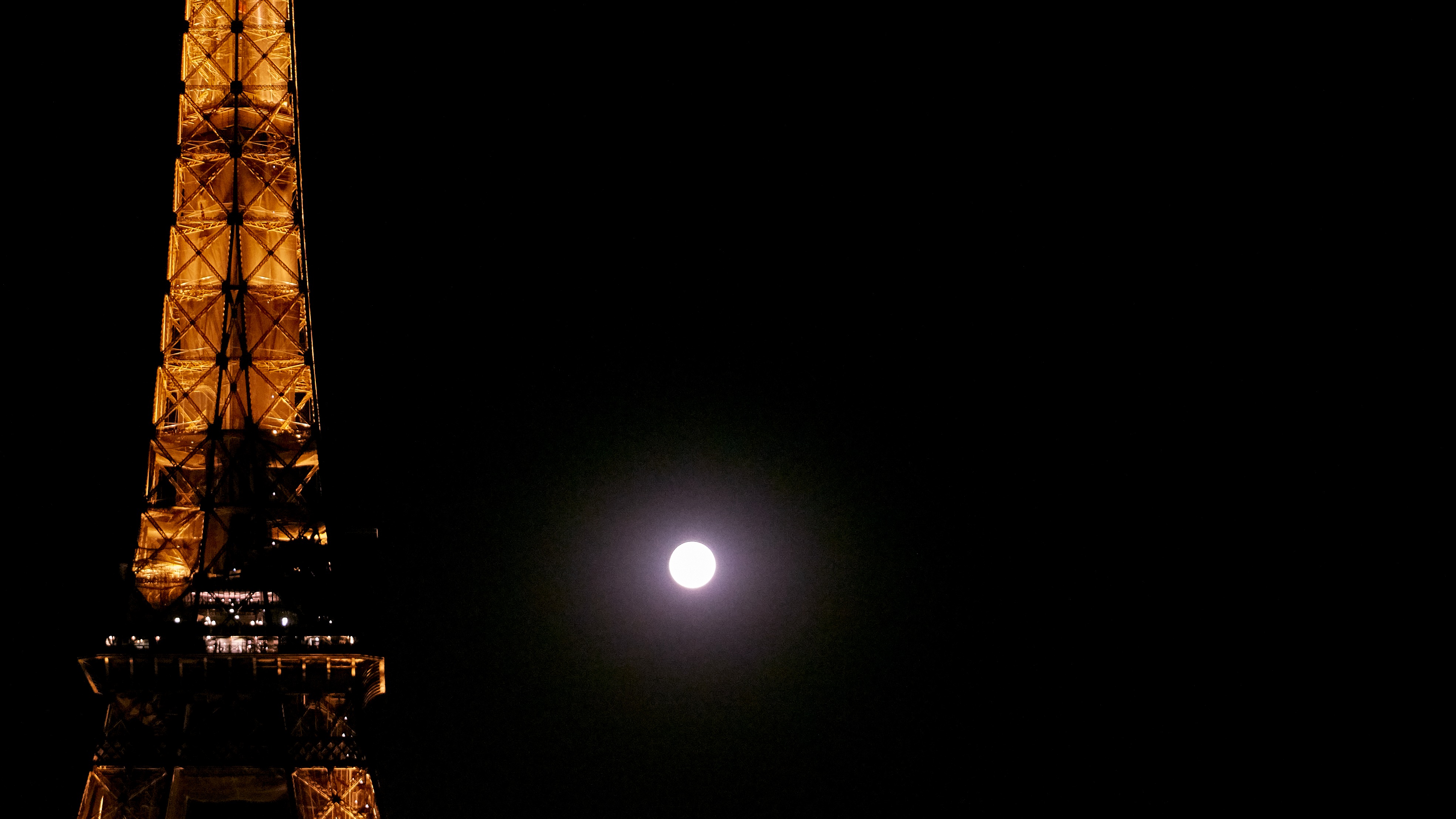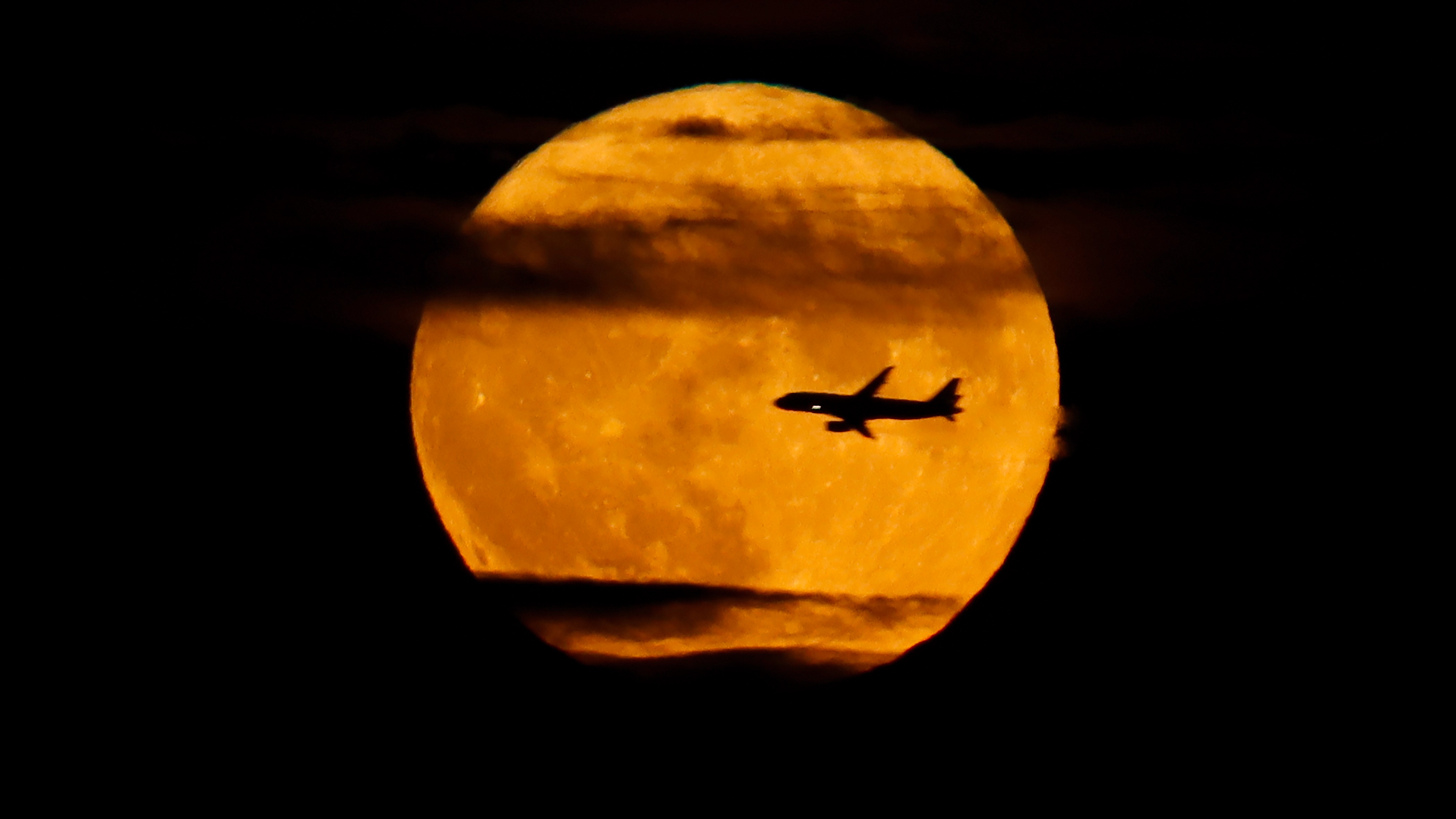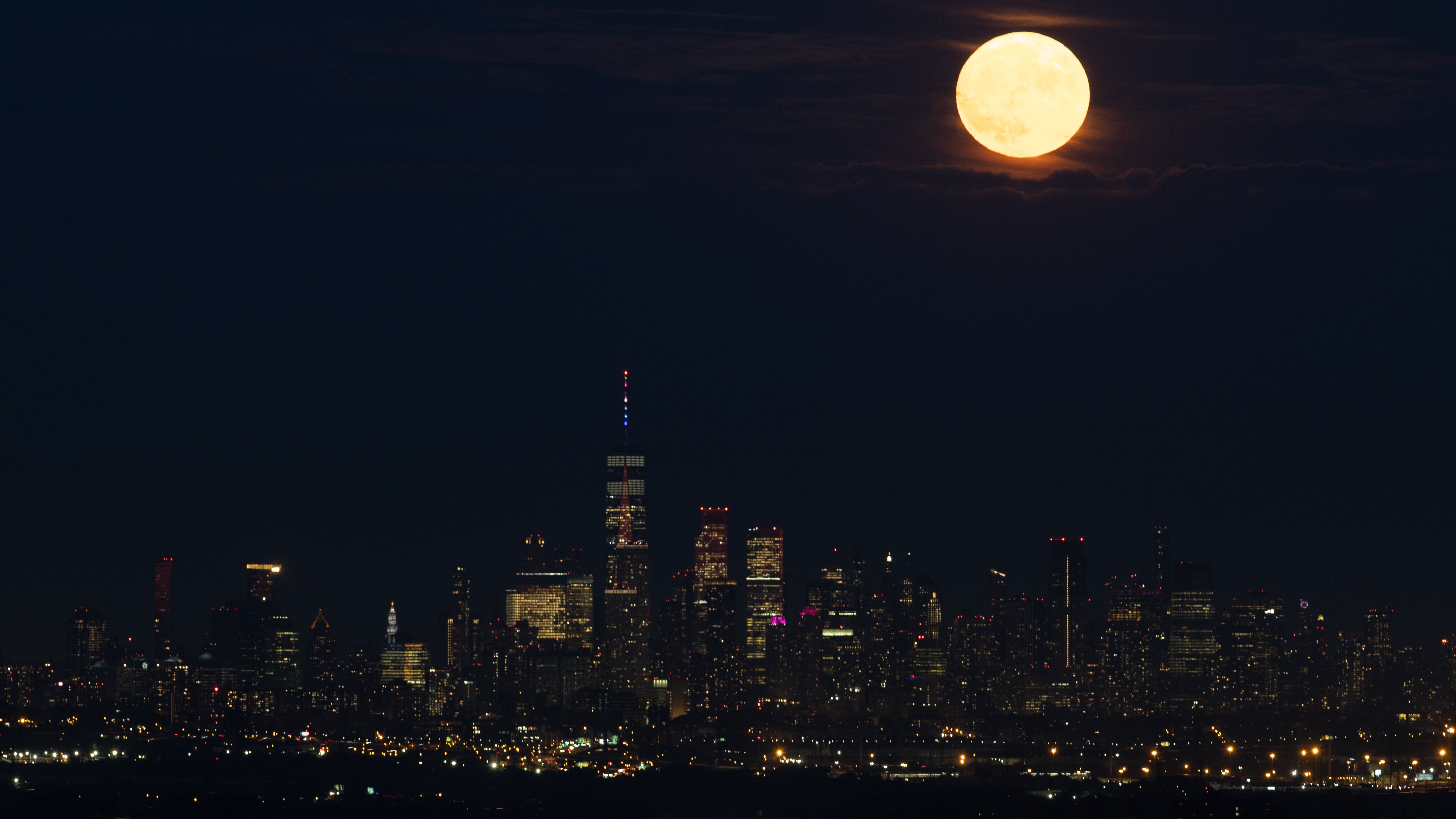Sturgeon supermoon of 2022 stuns viewers around the world (photos)
It's the last one of 2022.

Viewers around the world took amazing footage of 2022's last supermoon.
Among the viewers was Gianluca Masi, the founder of the Virtual Telescope project, who conducted a full moon livestream of the Sturgeon supermoon yesterday (Aug. 11).
"Despite the clouds, I could image and share with our community the Sturgeon
supermoon while it was setting behind the St. Peter's Dome and Basilica in Rome,
Italy," Masi wrote in a statement. (You can see the picture just above.)
While some were concerned about how the full moon washed out the highly popular Perseid meteor shower, which peaks tonight (Aug. 12), the moon still attracted a lot of attention around the world.
Moongazers in Europe, the United States and other places showed images of Earth's closest large neighbor rising near buildings, trees and lakes. The supermoon is slightly larger than the usual full moon, although it's hard to spot the difference without advanced equipment.
Take a look at some of our favorite community images below.
Related: The brightest planets in August's night sky: How to see them (and when)
Get the Space.com Newsletter
Breaking space news, the latest updates on rocket launches, skywatching events and more!



Tonight's Super Sturgeon Moon rising over the Washington Monument in Washington, DC#fullmoon #supermoon #SuperSturgeonMoon #SturgeonMoon #WashingtonMonument #washingtondc #supermoon2022 #FindYourPark @capitalweather @spann #thePhotoHour #StormHour #IGDC #NikonNoFilter pic.twitter.com/PjykkclG6fAugust 12, 2022
Tonight's full moon, also known as the Sturgeon, is the fourth and final Supermoon of the year. pic.twitter.com/A4cuJOE7yUAugust 11, 2022
Tonight’s supermoon passing behind some beautifully textured clouds pic.twitter.com/VMKU3HY4M9August 12, 2022
A better walk home 🙂#supermoon pic.twitter.com/IH7aPjxBCoAugust 11, 2022
Full sturgeon supermoon over Lake Superior ¡ 🌝🌊 pic.twitter.com/NltGi321KFAugust 12, 2022
The last supermoon of the year. pic.twitter.com/EUtzgOnSdtAugust 12, 2022

Looking for a telescope for the next stargazing event? We recommend the Celestron Astro Fi 102 as the top pick in our best beginner's telescope guide.
The August full moon officially peaked Thursday (Aug. 11) at approximately 9:36 p.m. EDT and 6:36 p.m. PDT (Friday at 0136 GMT). The moon was within 90% of its closest approach to Earth, making it a "supermoon" according to eclipse expert Fred Espanak, who is also a retired NASA astrophysicist.
The event followed three supermoons in a row this year, in May, June and July. Such a streak can happen fairly often. Espanak's website shows that 2023 will also see four consecutive full supermoons, as will 2024. That said, the definition of "supermoon" can vary depending on who you are talking to.
If you're looking for a telescope or binoculars to observe the moon, our guides for the best binoculars deals and the best telescope deals now can help. If you're looking for camera tips, consult our astrophotography for beginners guide.
Editor's Note: If you snap a photo of the Sturgeon supermoon and would like to share it with Space.com's readers, send your photo(s), comments, and your name and location to spacephotos@space.com.
Follow Elizabeth Howell on Twitter @howellspace. Follow us on Twitter @Spacedotcom or on Facebook.
Join our Space Forums to keep talking space on the latest missions, night sky and more! And if you have a news tip, correction or comment, let us know at: community@space.com.

Elizabeth Howell (she/her), Ph.D., was a staff writer in the spaceflight channel between 2022 and 2024 specializing in Canadian space news. She was contributing writer for Space.com for 10 years from 2012 to 2024. Elizabeth's reporting includes multiple exclusives with the White House, leading world coverage about a lost-and-found space tomato on the International Space Station, witnessing five human spaceflight launches on two continents, flying parabolic, working inside a spacesuit, and participating in a simulated Mars mission. Her latest book, "Why Am I Taller?" (ECW Press, 2022) is co-written with astronaut Dave Williams.









